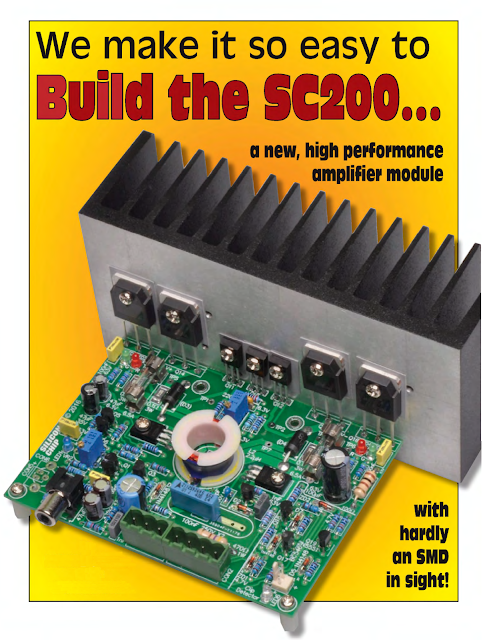SC200 audio amplifier complete project, 200W audio amplifier

This completely new amplifier circuit incorporates most of the features of our Ultra-LO Mk4 200W amplifier module but uses easy-to-solder through-hole components. There are no tiny surface mount components. Very keen audiophiles have built it in large numbers but being Class-A, it does have the normal drawback of being quite inefficient and therefore it dissipates a lot of heat for its modest power output of 20 watts. Finally, the next most notable amplifier module was the Ultra-LD Mk4 design which not only has high output power but its very low harmonic distortion levels challenge even those achieved by the 20W Class-A design. Indeed, the 110W version of the Ultra-LD effectively renders the modestly-powered 20W Class-A design irrelevant. Why would you build that Class-A design when you can build a much more powerful Class-AB design for the same money and with virtually indistinguishable performance? So why are we producing this new SC200 module? Firstly, we have f


